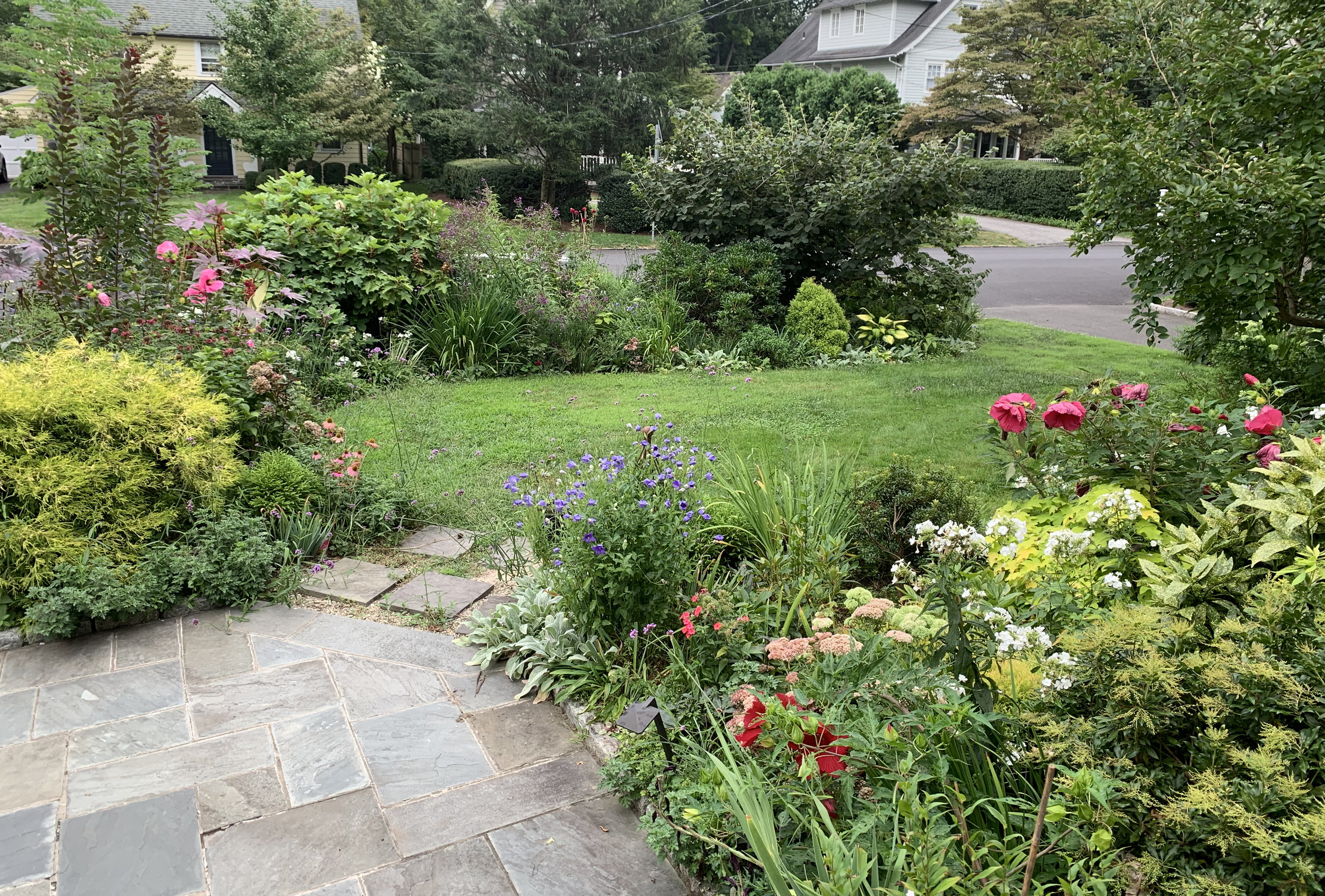The Trees Have Value
(albeit some more than others), but many of them are large flowering trees and it will take years before the “better” trees replace them.
Crabapples do have issues. They are really inconsistent in their growth and they lose their leaves very early. You only have to look a few feet away from this spot to see that. This is the nature of crabapples.
If they are so awful, why is the town continuing to plant them? We are talking about cutting down 16 crabapples, about as many as were just planted in the OG train station parking lot. The growing conditions aren’t perfect, but the biggest one is over 25’ tall and hardly on deaths door. I realize that conditions may get worse in the near term, but the “there going to die so we may as well kill them now” argument seems drastic and shortsighted and it makes me glad your not my doctor.
Except for the one dogwood, these are the only flowering trees in this section of the park. I’m not arguing that they are perfect, but to quote Bruce Spaman, “(These trees) look great in Spring.”
They Aren’t Stopping Implementing the New Plan
80% of the planned trees can be planted without removing any trees, and even more can if their planting position is adjusted.
I have some diagrams showing how we can implement the new plan and how we can start right now.
The new plan is not always better.
It has a hate-on for crabapples (which in inconsistent with the firm’s tree choice and their other report)
It does not replace 30% of the condemned trees in two very visible areas. 6 of
It plants clumps of ornamental trees too close together, and the ornamental trees are not very diverse.
It calls for a single species of large trees to be planted around this section of the park, which is inviting a tree plague to destroy the whole area (dogwoods, elm, ash, hemlock, and we are on the way to losing malus.)
The Diagrams
Tree Value Areas
I’ve grouped the condemned crabapples into the four areas marked in this diagram. The condemned trees are red circles or the ones rimmed in red. Areas A, B, and C are not impervious to flooding, but all you need is to look at the condemned trees to know that these areas are healthier than Area D.
Area A
The four trees in Area A (three crabapples and a sugar maple) are large, attractive, healthy trees between Wesskum Wood Road and the tennis courts. Not only will we lose their habitat, shade, and flowers, but we will also be forced to look at the chain link fence that they screen.
These Trees Will Not Be Replaced
the plan calls for a “Native” Garden to cover the entire area between the road and the fence. Aside from highlighting the fence, this garden will be a maintenance nightmare that will be an eyesore for years. Please don’t do this.
Area B
These four mature flowering crabapples will be replaced with “better” trees (BPMP calls for swamp oaks).
It will take years before the new trees are as big as the crabapples are now. The new trees will have 95% less volume than the existing trees and it will take a decade before the new trees will have the same mass.
The plan does comment that the crabapples “conflict with the park’s character.”
but it never defines this character, and it calls for six other smallish flowering trees to be planted a few yards away.
Area C
The plan wants to remove the two crabapples that flank the restroom. They will not be replaced.
These trees are quite attractive and they were praised in the 2009 Historic Landscape Report that was produced by the same firm as being part of the “collection of plant materials (which) add significantly to the historic character.”
The 2015 plan claims that these trees “conflict with the park’s character.”
Area D
This is the area where flooding is hurting the trees. It would be better if flood tolerant trees had been planted here, but they weren’t. We have invested several years in these trees, and even though they should be better, they provide the only shade in the area. They aren’t perfect, but it will be years before new trees can replace their shade. Planting better suited trees is a good idea, but we don’t have to remove them all to make room.
This hearing is about the trees, but the trees are being removed because of the plan. BPMP is all we got. I have heard that it’s “not sacred,” but what does that mean?
BPMP is the plan, and the trees are being removed to accommodate it.
Is it unreasonable that
There is no plan, or there is one that is not being communicated.
Is it unreasonable that we expect that you have a plan and tell us about it before
I am not going to give you my opinion on every detail of the plan (well not in one sitting), but the plan is a big part of the justification for arborcide, so it’s reasonable that elements of the plan should be used in the trees’ defense.
The number of trees went from 30 to 20 in a few weeks and nobody blinked.
This method is too extreme and no alternatives are being considered
